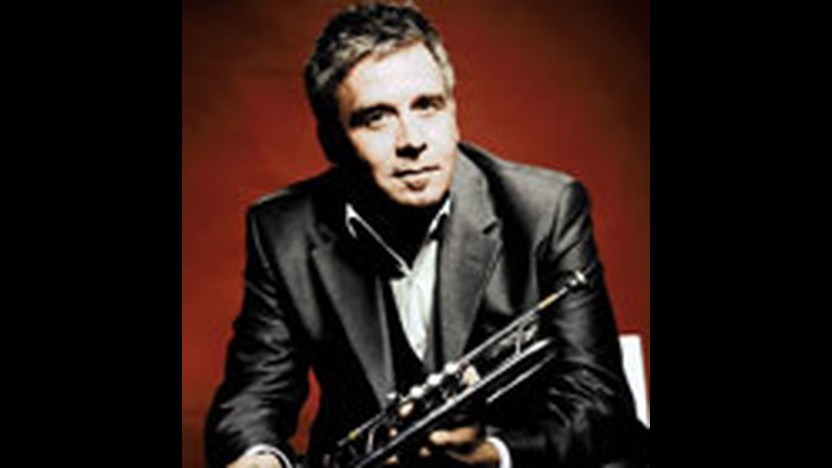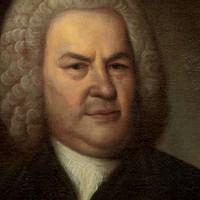Haydn and Bach

Sponsored By
- November 22, 2013


Sponsored By


From 1723 until his death in 1750, Johann Sebastian Bach held the demanding position of Thomaskantor, directing music for the principal churches of Leipzig and training the young choristers under his care. Somehow in his spare time he also managed to lead the Collegium Musicum, an amateur ensemble that mounted weekly performances. The Collegium Musicum provided Bach an outlet where he could present secular music not fit for church — including his four Orchestral Suites — played by spirited local amateurs, his own sons among them.
Manuscript sources date the Orchestral Suite No. 3 to around 1731, with some of the parts in Bach’s own hand, and others written out by his son Emanuel. The term Bach would have used for such a work was Ouverture, the same heading given to the substantial first moved that he styled (and spelled) in the French manner. The second-movement Air, known familiarly as the “Air on the G String,” was made famous through a 19th-century rendition by violinist August Wilhelmj, who transposed the melody so he could play it all on his lowest string. An air, equivalent to the Italian “aria,” is a vehicle for song-like melodies, as opposed to the dancing styles that comprise the remainder of the suite.
The first dance form, the Gavotte, features a heavy pulse of two beats per measure, with the introductory upbeat of each phrase emphasized. In the sprightly Bourrée, trumpets and timpani enliven the pulse by accentuating the weak beats. The closing Gigue, a dance adapted in France from the jigs of the British Isles, retains the reeling triplet pulse of its folk source.
Aaron Grad ©2022

Haydn composed his final concerto in 1796, at the request of the trumpeter Anton Weidinger, a member of the Vienna Court Orchestra. Weidinger had been experimenting since 1793 on a keyed trumpet, drilling four to six holes that were covered by key-operated pads, like those still found on today’s woodwind instruments. The design was eclipsed in the nineteenth century by a system of valves, but it was a worthy effort to free the trumpet from its limited range, and it generated two treasures of the trumpet’s concerto repertoire, this work by Haydn and another concerto that Weidinger commissioned from Johann Nepomuk Hummel.
A natural trumpet—that is, one without valves or keys—can play notes only from within the overtone sequence of its fundamental pitch, which is determined by the length of the tubing. The lowest overtones progress in wide leaps (an octave, then a fifth, then a fourth, and so on), and it is not until the upper overtones that the natural trumpeter had any possibility of playing adjacent notes. Weidinger’s keyed trumpet allowed for stepwise and even chromatic movement in all parts of the instrument’s range, a feature that Haydn exploited throughout the concerto. The fact that Weidenger waited four years to unveil the concerto suggests, however, that it was no small challenge to render Haydn’s melodic line on the new instrument.
Before the trumpet soloist even takes flight, the opening tutti section establishes the duality at the heart of the work. In the first measure, the horns introduce rising harmonies so idiomatic of natural brass instruments that musicians know them as “horn fifths.” These gestures flow fluidly from the trumpet in later solo passages. But when the strings and flute present the secondary theme, they go far afield the trumpet’s native idiom, issuing drawn-out notes that inch down a segment of the chromatic scale. It must have made quite an impact when it came to be Weidinger’s turn to deliver those falling chromatics!
The Andante cantabile movement has its own share of chromatic inflections, but the effect is no mere parlor trick; the trumpet sings gracefully in the range of a soprano voice, and many of the half-steps accompany harmonies borrowed from the minor mode, imparting a touch of melancholy. The finale showcases the trumpet’s energetic ornaments and leaps, and the orchestra joins in with all the verve Haydn had developed in the course of 104 symphonies.
Aaron Grad ©2013
Composer’s notes:
It all began in about 1967, when my composer friend Kurt Schwertsik brought back from America the mysterious phrase “MOB art & tone ART',” which he'd dreamed up on his travels. Soon after, Kurt and I and another composer friend, Otto M. Zykan, got together with four young Viennese instrumentalists (Volker Altmann, horn; Roland Altmann and Kurt Prihoda, percussion; and Leonhard Wallisch, cello), and started giving concerts. Perhaps “concerts” is the wrong word: We tried to make things as informal and friendly as we could, and we liked to appear in places where no living composers had set foot before. Otto played the piano, I the double bass, and everyone did a bit of singing and acting. Kurt didn't actually take part in our concerts—he was already a busy horn player in the Vienna Symphony Orchestra—but he did give us our name: “The MOB art & tone ART Ensemble.” We liked the sound of it, and weren't too bothered about its precise meaning, if any. In fact, we rather avoided discussing the matter, because we were much more interested in inventing new kinds of programs and discovering new audiences than in making the kind of policy statements that might suggest we were some kind of “school.” All of us felt a bit overawed by Schoenberg, Berg, and Webern—the one great “Viennese School” of the 20th century—and while trying to learn what we could from them, we wanted to find our own different ways.
Personally, I love the search for simplicity, and enjoy it like some rare adventure. For all of us, enjoyment and invention were the first reasons for the “MOB” Ensemble's existence. Although other engagements prevented us from keeping the Ensemble continuously going for more than about seven years, we look back on the whole experience with a special affection.
The Three MOB Pieces are typical of the kind of music we were writing for the MOB Ensemble in those days. The second piece is, of course, a little tribute to the great poet Heinrich Heine, whose poems often begin in a very romantic and flowery way, but end in despair.
HK Gruber ©

After Joseph Haydn’s longtime patron Prince Nikolaus Esterházy died in 1790 and his successor disbanded the court orchestra, Haydn was left with a reduced salary and more freedom than he had enjoyed in decades. Seizing the opportunity, a German impresario active in London enticed Haydn to England with a generous contract for the 1791–92 season. Haydn’s London residency was a tremendous success, and he would have been happy to stay abroad, but the new Esterházy prince called Haydn back to Austria, where he spent the next 18 months fulfilling his kapellmeister duties (and also giving some lessons to a young new arrival in Vienna, one Ludwig van Beethoven).
Haydn arranged a second London visit as soon as he could, arriving in February 1794. He ended up staying through the 1795 spring season and composing more symphonies along the way, including the Symphony No. 103 in E-flat Major — his penultimate work in a genre that he had dominated for more than 30 years. The impresario who originally brought him to London had stopped mounting concerts, so Haydn teamed up with a rival producer/violinist who led an enormous orchestra of about 60 players. By then Haydn had come to recognize that London audiences loved memorable effects, and so he began that symphony with a suspenseful measure of timpani that earned it the nickname “Drumroll.” The imposing introduction sets the stage for the boisterous body of the movement, which enters in what at first seems the wrong key, and which bounces along in a syncopated 6/8 rhythm that obscures, for some time, exactly where the downbeat falls.
The slow movement takes the form of a double set of variations, alternating between variations on the initial minor-key theme and separate variations on a contrasting major-key theme. In the minuet, melodic echoes playfully elongate the opening statements, while the contrasting trio section uses cascading entrances to put a different spin on the echo effect.
In a bookend to the exposed start of the symphony, the finale opens with an unaccompanied horn call figure, a motive that evokes hunting parties and the Austrian countryside where Haydn spent so many years entertaining the Esterházy family. The main theme, with its prominent repeating notes, in fact resembles a Croatian folk song that Haydn may have heard during his long residencies at the Esterházy summer palace near the Hungarian border.
Aaron Grad ©2025
Get driving directions and find nearby parking.
Find dining options close to the venue.
View seating charts to find out where you'll be seating.
Get driving directions and find nearby parking.
Find dining options close to the venue.
View seating charts to find out where you'll be seating.
